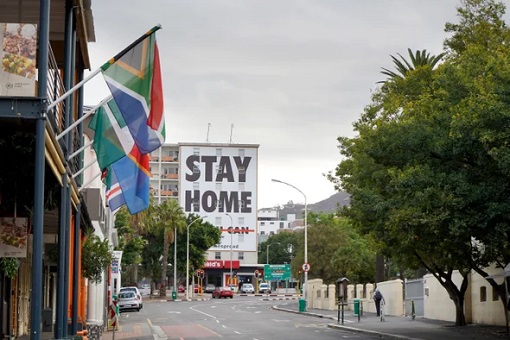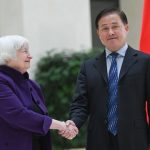With hospitals around the world overflowing with Coronavirus patients, South Africa appears to be one of very few high-population countries. Whilst 17,000+ seems like a lot of cases, the death statistics are by far the most accurate way to compare countries, as most deaths are tested whilst many people go on living asymptomatic with Corovarius.
South Africa has 312 deaths as of May 20th, which is around the 41st largest in the world. This is certainly a good sign, because their population and globalism would otherwise predict them to be higher.
Nevertheless, the pandemic is/will be destabilizing the economy. South Africa has reacted in an authoritative manner to the pandemic, as they’ve not only enforced a lockdown and banned outside exercise, but they’ve banned the purchase of alcohol and cigarettes.
The lockdown has been deemed to be one of the strictest in the world, with many negative unintended consequences from the measures too. For example, civilians are turning to purchasing alcohol and cigarettes from gangsters and organised criminals in order to acquire them.
Some local experts predict that South Africa will lose around 80 wineries, 300 producers and 14,000 jobs as a result. Evidence of this is that the largest brewery has recently been forced to dump the equivalent of 20 million bottles of beer away – costly wasted revenue.
You could even argue that the virus itself has caused less economic damage directly than the reaction in preventing it – though this certainly isn’t to say that there should be no lockdown measures. In a sense, the South African government could be viewed to prefer a situation where impoverished families get even poorer as opposed to having to afford the healthcare costs from the pandemic increasing. Of course, this might be an unwarranted assumption, but it is an economic reality.
South Africa’s economic inequality has been deepening for a while now. GDP contracted heavily from 2011 to 2016, and then again in 2019. Whilst it was forecast to grow in 2020, the Coronavirus may have other plans. It appears although infections are somewhat under control in South Africa, compared to other major economies. However, South Africa’s outlook doesn’t just depend on this, but also the government’s response and measures.

The Rand’s outlook in 2020
The economic contractions among the poor and businesses however will catch up with the government, because the Rand for example is under threat. The USD/Rand for example has been reasonably steady since the end of 2018, but in recent months it has devalued considerably – you can now buy over 18 Rand to the Dollar compared to 14 in December.
South African’s most prominent investment bank claims they expect the Rand to turn a corner by around July 2020. They also state however that there is a heightened risk of the GDP underperformance leaving a lasting legacy on the currency.
The Rand remains at weak levels, as well as being volatile. However, there is a hope that monetary policy along with some other fiscal measure will help stimulate growth again and stabilise the economy.
International money transfers from South Africa are on decline, which helps explain the fall in price. The country is undergoing not just problems internally, but its PR image hasn’t restored to what they’d hoped for. Discrimination, inequality and violent crime are all things heavily connotated with the country for many outsiders, even if the country has a lot to offer.
South Africa in late 2020
While Coronavirus infections being low is a huge positive for South Africa, it’s not necessarily going to hold true. Given that it’s not as much of an international hub as Europe and America, it may just be that the country is lagging behind. Some scientists have warned that up to 40,000 could die in South Africa from the virus by the end of 2020.
The group of academics deemed an “optimistic scenario” where the country has 100,000 cases by the end of August, in which it begins to decline. However, the pessimistic scenario projections claim that active cases would peak at 120,000 by August, meaning 45,000 could die by November. If these predictions are even close to being accurate, then South Africa will struggle to have enough intensive care units.
There is a strong divide in South Africa’s scientific and political environment surrounding lockdown. The Democratic Alliance are taking the government to court over the stringent regulations, such as banning alcohol and tobacco sales, claiming they should be ended.
Moving forward, South Africa is in dire need of more social, economic and political harmony. At the root of most problems is a deep divide, as well as the Apartheid history.

|
|
June 12th, 2020 by financetwitter
|


|

|

|

|

|

|




























Comments
Add your comment now.
Leave a Reply